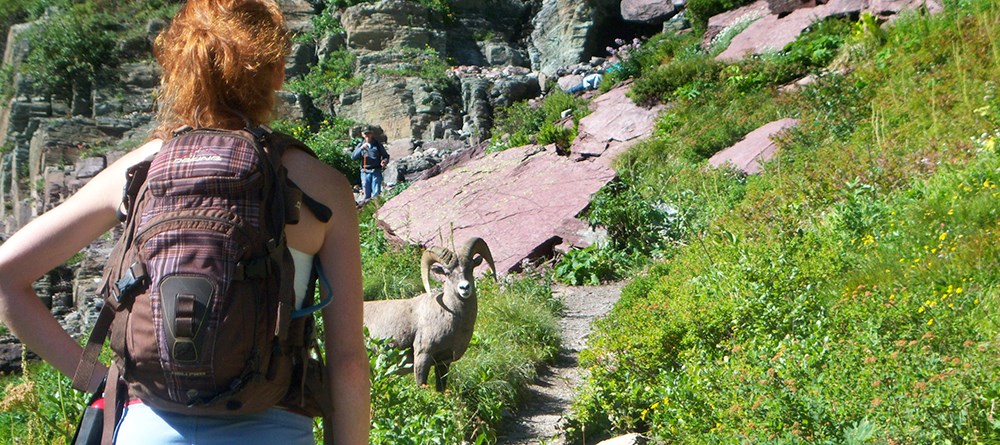
Stephanie Metzler Wildlife HazardsGlacier provides a wonderful opportunity to view animals in their natural setting. Along with this opportunity comes a special obligation for park visitors. With just a little planning and forethought, visitors can help ensure the survival of a threatened or endangered species. Always enjoy wildlife from the safety of your car or from a safe distance. Do not approach wildlife to take photographs. Every year visitors get too close to wildlife in order to get a picture. Sadly, injuries have occurred as a result. Use a telephoto lens instead. This will not only insure your safety, but the safety of the animal. And never approach a bear or get out of your car to get a picture of a bear. Feeding, harassing, or molesting wildlife is strictly prohibited and subject to fine. Bears, mountain lions, goats, deer, or any other species of wildlife can present a real and painful threat, especially females with young. 
For most wildlife, like moose, elk, bighorn sheep mountain goats, deer, and coyotes, visitors are to be at least 75 feet (25 yards/23 meters) away. For wolves, grizzly and black bears, visitors need to be at least 300 feet (100 yards/91.4 meters) away. TicksTicks are most active in spring and early summer. Several serious diseases, like Rocky Mountain Spotted Fever, can be transmitted. Completely remove attached ticks and disinfect the site. If rashes or lesions form around the bite, or if unexplained symptoms occur, consult a physician. Rodents and HantavirusDeer mice are possible carriers of Hantavirus. The most likely source of infection is from rodent urine and droppings inhaled as aerosols or dust. Initial symptoms are almost identical to the onset of flu. If you have potentially been exposed and exhibit flu-like symptoms, you should seek medical care immediately. Avoid rodent infested areas. Camp away from possible rodent burrows or shelters (garbage dumps and woodpiles), and keep food in rodentproof containers. To prevent the spread of dust in the air, spray the affected areas with a water and bleach solution (1½ cups bleach to one gallon of water). |
Last updated: August 16, 2017
